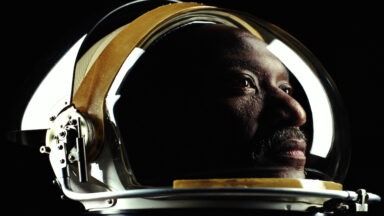Researchers Develop Device to Influence Direction of Your Dreams

Sleep is strange; at the end of the day we fall unconscious, our bodies become paralyzed, and we hallucinate vividly, before quickly forgetting what was just experienced. But now researchers at MIT are engineering an interface to influence this bizarre state, believing it may hold the key to our creative genius.
There is a period between wakefulness and that deep, restorative slumber, known as hypnogogia. These fleeting moments have long been considered a place where creative brilliance can be accessed.
Innovators including Thomas Edison, Nikola Tesla and Salvador Dali all intentionally tapped into this state for inspiration, attributing much of their inventions and masterpieces to it.
Holding a pair of steel balls as they fell asleep, they would drift into the hypnagogic state for a few seconds, before their muscles would relax, the balls would fall to the floor, and they would be jolted back awake. This brief entry into the dream state would allow them to remember the bizarre hallucinations and ingenious thoughts floating in the creative ether.
This was part and parcel to Dali’s famous paranoiac-critical method that produced his most trippy and iconic work. But instead of steel balls, Dali used a metal key and an upside-down plate for it to land on, producing a loud clang.
Dali found that not only did these micro-naps spark creativity, but they also provided a refreshed mental state, without the grogginess of a longer rest.
Taking note from these innovators, MIT researchers are developing a modernized version of the steel ball technique through a worn computer interface called Dormio. But instead of waking them, the interface influences sleepers in hypnagogia, attempting to control the direction of their semi-coherent state, and they’ve had some preliminary success.

Dormio interface via media.mit.edu
Using a glove fitted with a series of wires and biosensors, the interface tracks users’ slow descent into sleep, measuring the subtle muscle relaxations of the hand. From there, an app provides an audio cue that prevents users from going into a deeper sleep, suspending them in the hypnagogic state with a prompted word or concept to focus on.
Thus far, the words ‘fork’ and ‘rabbit’ have been used successfully as a theme for “dream content.” Users are then asked questions to capture ideas floating through their mind, without fully waking them, before they are then allowed to fall asleep.
We spend close to a third of our lives sleeping, where our minds exist in creative, fantastic hallucinatory states. Researchers on the team want to figure out how to tap into that world and potentially take advantage of it.
The unconscious mind has been the subject of study by scientists for centuries, yet we still know so little about it. It’s also been proven that we are all born creative geniuses, but through the constructs and demands of our society, our originality is constantly suppressed. Could that creativity be resurrected with hypnogogic enhancement?
What Your Sleeping Position Reveals About You

I know it’s better for me as a woman to sleep on my back, arms at my side or resting on my torso peacefully. But no matter how hard I fight, the lure of sleeping in my favorite position—curled up on my side, legs tucked bent towards my chest—is just too much to resist. Sleeping in this position simply comforting to me, and sends me right to sleep, whereas sleeping on my back is a struggle. You might have a similar predicament, with this pose or a different one. Why is it like this? Why can’t we just automatically shift to the position that’s better for us?
Your sleeping position may actually have a connection with your personality and the way you think, feel and behave. There’s enough research to indicate that the posture adopted while sleeping has a lot to tell about the kind of people we are – introverted, confident, fun-loving, trusting, or something else.
It’s along the same vein as body language. How you sit, stand, or gesture when you’re awake can be unconscious signals, such as leaning away from someone you don’t like or crossing your arms during an argument. Sleeping positions are similar, and maybe even more revealing, as you have very little control of where you end up when you’re asleep, thus sending signals that are true to you without any filters.
Here are the top six most common sleeping positions, as well as a general overview of what they can mean:

- Fetal Position
What It Looks Like:
Curled up on your side.
What It Means:
This is the most common sleeping position (though it’s more common for women than men). According to research on this sleep subject, those who sleep in the fetal position were found to be sturdy and strong on first impressions but introverted and sensitive at heart when better known. These people are reserved and usually take time to open up to others but when they do, they are relaxed and comfortable. The outwardly tough appearance and brave face is actually a protection against the world. People with leg cramps or conditions like the restless legs syndrome generally experience leg discomfort, and tend to adopt the fetal position.
Health Considerations
If you’re like me and are constantly curling up to your left side, you may be increasing the pressure and stress on vital organs such as the liver, the heart, the stomach and the lungs. So, if fetus is your position of choice, take care to curl up on the right side of your body.




































